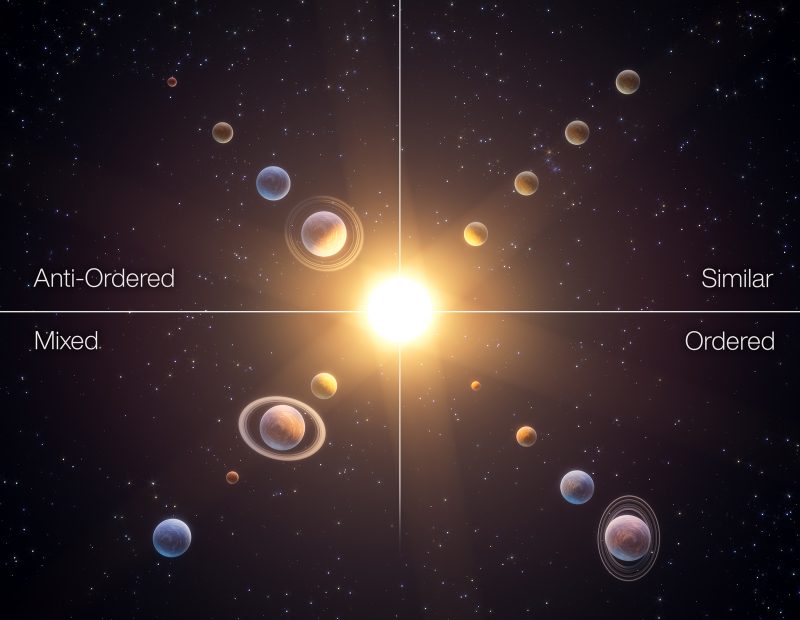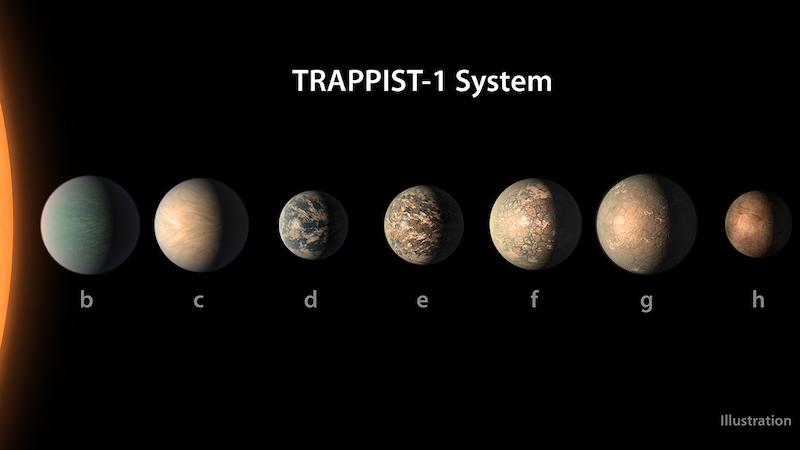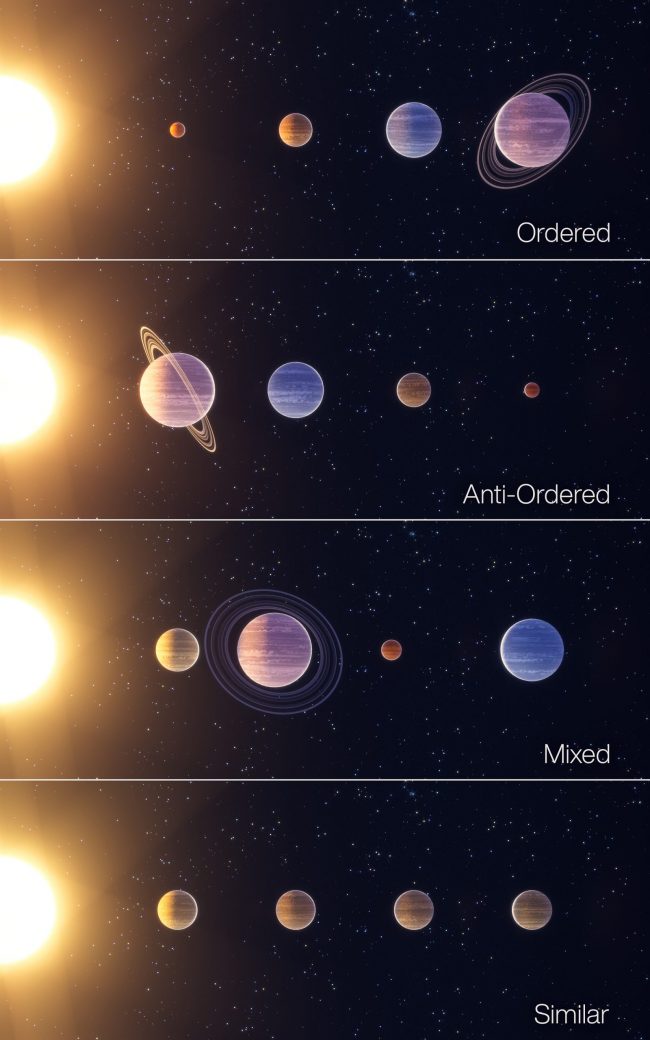
Before 1992, when astronomers found the first exoplanets, they assumed other solar systems – if they existed – would be similar to ours. Now, we’ve found more than 5,000 exoplanets. These known worlds orbit fewer than 4,000 distant stars (of the hundreds of billions of stars in our Milky Way galaxy). And only about 850 of these stars have at least two confirmed planets. So … about 850 known multi-planet systems so far. Most don’t resemble ours. That’s the conclusion of a new study, announced on February 14, 2023, which categorized exoplanet systems into four basic classes. Our local solar system – our sun and its planets – fall into what these scientists are calling the Ordered class. Our class is the rarest of the four, they said.
The other three classes, as categorized by these scientists, are called Similar, Anti-Ordered and Mixed.
The researchers are from the National Centre of Competence in Research PlanetS (NCCR PlanetS) and the Universities of Geneva and Bern in Switzerland. They published two papers about the new work on February 14 in the peer-reviewed journal Astronomy & Astrophysics.
The 4 classes of planetary systems
Classifying things is an honored first step in science. It’s a way of making sense of something new and unknown. And – sci-fi movies and books notwithstanding – exoplanet systems were unknown until the 1990s. We thought they should exist. But no one had definitively found any.
Plus, once scientists started finding them, we couldn’t see those distant planetary systems very clearly. Lokesh Mishra at NCCR PlanetS and the Universities of Bern and Geneva is lead author of the new study. He commented:
More than a decade ago, astronomers noticed, based on observations with the then groundbreaking Kepler telescope, that planets in other systems usually resemble their respective neighbors in size and mass, like peas in a pod.
It was not possible [at that time] to determine whether the planets in any individual system were similar enough to fall into the class of the ‘peas in a pod’ systems, or whether they were rather different, just like in our solar system.
Because, indeed, the planets in our solar system don’t resemble peas in a pod. There are the small rocky worlds (like Earth and Mars) near our sun, and then there are the big gaseous planets (like Jupiter and Saturn) farther out.
But as it has turned out, planetary systems can be classified not just into two basic systems (peas-in-a-pod versus non-peas-in-a-pod), but into four sorts of systems. Mishra said:
We call these four classes Similar, Ordered, Anti-Ordered and Mixed.
And it’s always possible additional types of planetary systems will be discovered.
Meet the 4 planetary systems
In Ordered planetary systems – like that in which we live – the mass of planets generally increases with distance from the star. Four little planets close to the sun. Four big planets farther out. So, our solar system is in the Ordered class. And as it turns out, the researchers found that ours is the rarest of the four classes they identified.
Conversely, in Anti-Ordered systems, the mass of the planets roughly decreases with distance from the star.
In Mixed systems, the masses of planets vary from one planet to the next.
Lastly, in Similar systems, the planets all have similar masses. An example of this sort of system is TRAPPIST-1, with its seven known planets, all similar to Earth in mass and size. And – as it turns out – Similar systems are the most common among the systems studied by these scientists.
Mishra explained:
Our results show that Similar planetary systems are the most common type of architecture. [We estimate that] about eight out of 10 planetary systems around stars visible in the night sky have a Similar architecture. This also explains why evidence of this architecture was found in the first few months of the Kepler mission.

Why are the types of planetary systems so different?
So, there are at least four different classes of planetary systems. But why? We don’t know, of course, but astronomers aren’t short of ideas. They’ve already thought of two possible factors. One is the masses of the gas and dust in the protoplanetary disks from which planetary systems form. The other is the abundance of heavy elements – oxygen, carbon, iron, etc, the sorts of elements we and our world are made of – in the stars themselves. Mishra explained their thinking:
From rather small, low-mass disks and stars with few heavy elements, Similar planetary systems emerge. Large, massive disks with many heavy elements in the star give rise to more Ordered and Anti-Ordered systems. Mixed systems emerge from medium-sized disks.
Testable predictions
Now – assuming these results stand the test of time – scientists can apply them to other known planetary systems and new ones as they’re discovered. Co-author Yann Alibert, at the University of Bern and NCCR PlanetS, touched on this possibility, saying:
A remarkable aspect of these results is that it links the initial conditions of planetary and stellar formation to a measurable property: the system architecture. Billions of years of evolution lie in between them.
For the first time, we have succeeded in bridging this huge temporal gap and making testable predictions. It will be exciting to see if they will hold up.

Bottom line: A new study suggests there are 4 types of planetary systems. The Ordered class, which includes our own solar system, is the rarest.











